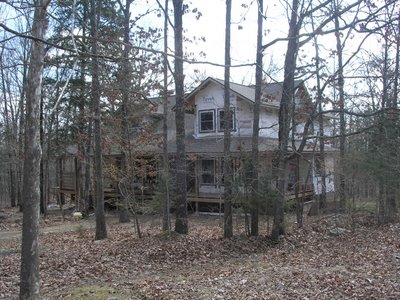We watched over a million bats fly out from under the Congress Avenue Bridge last night, but they were moving to fast for the camera to record.
This morning we boarded the Yellow 'Dillo' and headed for the LBJ Presidential Library. Turns out the Orange 'Dillo' is the only one that goes there so we walked the last mile though the University of Texas Campus. It's the second largest University in the US. We saw a co-ed wearing shorts and elaborately tooled cowboy boots.

The library gets an eight on a scale of ten. It's a huge ten story building. There's a large display of Vietnam era paintings and a blue Lincoln presidential limousine with a 460 cubic inch engine and oversized brakes and transmission. One display is an animated rubber LBJ in a cowboy hat telling folksy jokes with a political point. The rubber LBJ cracks this one:
An old farmer goes to see his doctor and complains about his hearing.LBJ should be remembered with charity for the 'Great Society' programmes, his civil rights efforts and his impressive depression era 'New Deal' legislation.
The doctor tells him he has to give up drinking if he wants his hearing to improve.
On the next visit, the doctor asks if the farmer has given up drinking and the old farmer says 'No'
'Why not?', asks the doctor.
'Well, I went home and thought about it and decided I like what I drink a lot more than I like what I hear'.

Lady Bird had a big section. She built the library. She was an interesting lady. She started a committee to build hiking trails on the riverfront 'Town Lake' here in Austin and her results were impressive. If you are of a certain age, you will remember that she worked hard as First Lady to get Lyndon to pass the Highway Beautification Act. This called for fences around automobile junkyards and a reduction in billboards on Interstate highways.

The George Washington Carver Museum was a one on a scale of ten. The museum really wasn't about this black American genius who held over 300 patents and invented peanut butter and mayonnaise. Save your shoe leather.
I meet a somewhat inebriated man wearing a cowboy hat at a bus stop. He starts talking to me as I approach from 20 feet away. He says he is sixty years old and a full-blooded Cherokee Indian professional guitar player. We swap jokes and 'Beverly Hillbillies' trivia for twenty minutes until his bus comes.
























